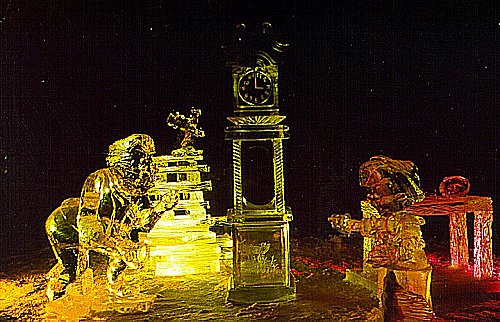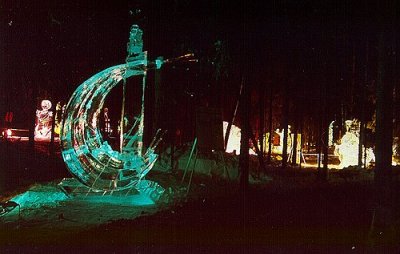
The 2000 World Ice Art Championships
So, you think you've got hard water ...
In Fairbanks, winter comes early and normally stays late. That's why it's not uncommon to hear people describe the four seasons in Alaska as early winter, winter, late winter, and next winter.
From about November through the end of March, the natural state of water in Alaska's Interior is solid. The water in a number of gravel pits around Fairbanks freezes deep and unusually clear. Because of this, the Ice Alaska ice carving competition draws competitors from around the world each year. In March 2000, the World Ice Art Championships were held here.
What makes the Fairbanks ice so spectacular for carving? Ice that forms in lakes and rivers is made from water that is subjected to currents. This in turn causes bubbles and white "discolorations" in the ice. These natural flaws in the ice's structure. Because the Fairbanks ice is harvested from local gravel pit ponds, which are small enough that there are no currents to compromise the ice as it forms. In the past, one of the visiting sculptors, in his high praise of Fairbanks ice, called it "the best I've ever sculpted." He named it -- The Arctic Diamond. It has been said that, "One can read a newspaper through a 40 inch thick piece of Fairbanks ice." Headlines maybe, but not the text.
There are two classes of competition, single-block and multi-block. In the single-block competition, forty teams of 2 persons each, receive one block of ice measuring 5' x 8' x 3'. This block weighs roughly 7,800 pounds (nearly 4 tons!). In the multi-block competition, twenty teams of 4 persons each receive 12 blocks of ice measuring 4' x 4' x 3'. These blocks weigh approximately 3,000 each for an aggregate weight of 36,000 pounds (nearly 18 tons!). Each of the two classes are divided into two categories: abstract and realistic.
Sculptors from around the world use tools ranging from chainsaws to woodcarving chisels to Dremel® Tools to carve the blocks. Some tools are purchased commercially, some are improvised. The only limitation on the carving is that it must only contain ice from the original block. The artists can cut, shape and piece the block into whatever shape the desire. Some of the resulting sculptures are in fact much larger (outwardly) than the original.
In order to get a full appreciation of the ice art one should really visit the ice park during the day to see how the crystal clear ice sparkles in the spring sunshine. Then, return again at night when the creations are light by colored lights causing them to glow. If you're lucky, you may even see the aurora borealis dancing across the Northern sky above.
Below are some photos taken of the single-block entries from the 2000 World Ice Art Championships. Enjoy!

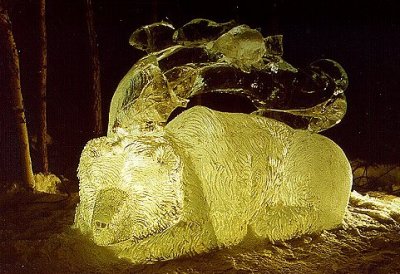
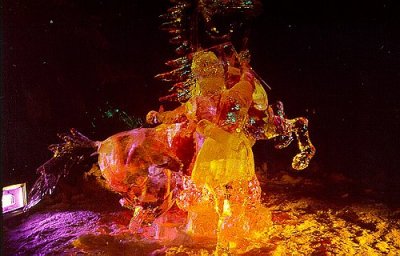
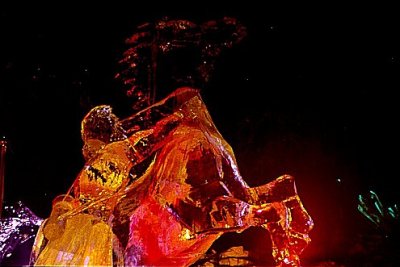
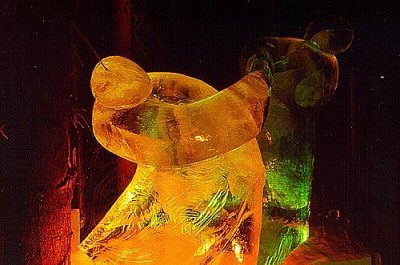
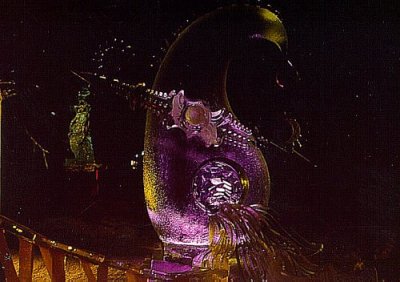
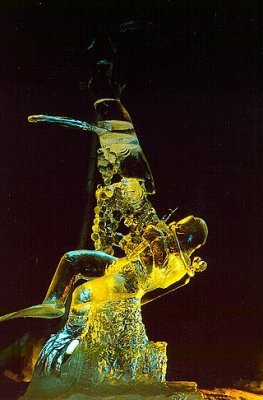
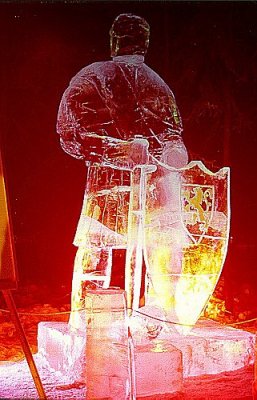
And my favorite carving of them all,
